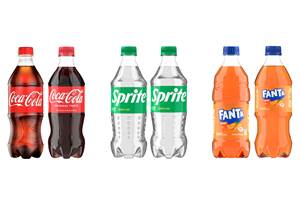Are You Ready to Export Your Film?
The shale gas boom could provide unprecedented opportunities for film processors.
I’ve blogged about shale gas before. I’ve also written an editorial about it. And my colleague Lilli Sherman wrote a comprehensive piece on the subject in our November issue. We pay so much attention to this topic because it has the potential to revolutionize plastics processing in North America.
More recently, I received a press release last week from , which was promoting the release of a multi-client study it conducted last year, Polyethylene Film Products: The Global Market.
Whenever I get studies like this the first thing I start to wonder about is whether the cost reductions that suppliers realize as a result of shale-gas developments will trickle down to the processor, our audience. The consensus is, not right away, if at all. Noted AMI’s John Campin: “I don't think there will be any dramatic shift in relative cost base in North America until after 2018: quite a lot will depend on how many of the proposed PE installations will go ahead.”
But then I started to wonder if I was asking the right question in the first place. In a way, yes…price is important to buyers of PE because many of them purchase it in large quantities. A swing of a penny a pound either way makes a huge difference. And, yes, there will be tremendous amounts of material produced by polyolefin suppliers from lower-cost feedstocks over the next few years. Should not these cost savings trickle down to processors? I mean, in some extrusion operations material accounts for 60-70% of their total manufacturing expenses. Not chump change.
Then I started to think "big picture." Relatively speaking, because shale gas is being generated across North America, the price for polyolefins paid by processors in this continent stand to be very competitive with those paid by processors located most everywhere else. So there’s an unprecedented opportunity for well-positioned processors to expand their 大象传媒 outside North America. According to the study, “It is highly probable that North America will have a polymer cost base on a par with that in the Middle East, leading to PE film exports from North America overtaking those of the Middle East. Looking beyond 2018, this projected cost advantage, when combined with the technological expertise of U.S. polyethylene film producers, will ensure North American PE film producers become truly global players.”
Where specific film applications are concerned, the study says the highest growth rate is forecast for stretch films. Demand for bags and sacks is also forecast to grow, as is growth of technical films, agricultural films, heavy duty sacks and shrink films.
While all of that is exciting and looks great on paper, it won't come to pass without effort on the part of processors. One thing film processors in particular must reevaluate is equipment. One industry source estimates that more than 70% of the 20 billion lb/yr of blown film is currently processed on equipment that’s 10 years old or older. As I see it, film producers will still be leaving money and opportunities on the table if they continue to run it through equipment that doesn’t offer the latest capabilities in throughput, gauge control and quality. Another issue North American processors must do is begin to establish overseas channels, either through sales representation or regional offices. Take note: European film producers are already starting to gain a foothold in North America.
So the shale gas opportunity is there. It’s not too early to start planning.
Contact John Campin for more details on this study.

Related Content
Flexible-Film Processor Optimizes All-PE Food Packaging
Tobe Packaging’s breakthrough was to create its Ecolefin PE multilayer film that could be applied with a specialized barrier coating.
Read MoreThin, High-Performance Nylon/PE Barrier Film for Thermoformed Packaging
Südpack’s Multifol Extreme film is well suited for greasy, protein-rich and frozen foods
Read MoreCoca-Cola’s Redesign of Small PET Bottles Pushes Lightweighting Below Prior ‘Floor’
Coca-Cola thought it had reached the limits of lightweighting for its small PET carbonated soft drink bottles. But a “complete redesign” led to a further 12% reduction.
Read MoreFirst Water Bottles With Ultrathin Glass Coating
Long used for sensitive juices and carbonated soft drinks, KHS Freshsafe PET Plasmax vapor-deposited glass coating is now providing freshness and flavor protection for PET mineral water bottles.
Read MoreRead Next
Beyond Prototypes: 8 Ways the Plastics Industry Is Using 3D Printing
Plastics processors are finding applications for 3D printing around the plant and across the supply chain. Here are 8 examples to look for at NPE2024.
Read MoreLead the Conversation, Change the Conversation
Coverage of single-use plastics can be both misleading and demoralizing. Here are 10 tips for changing the perception of the plastics industry at your company and in your community.
Read More













